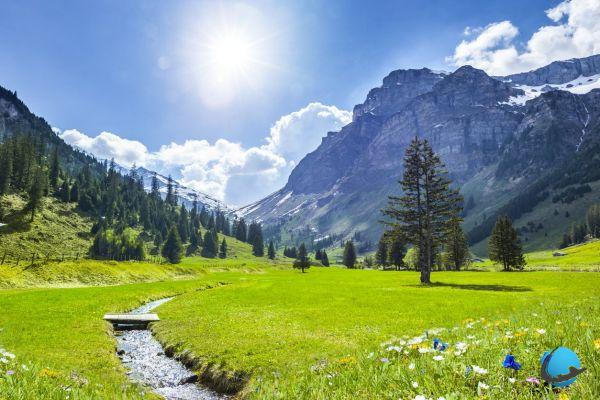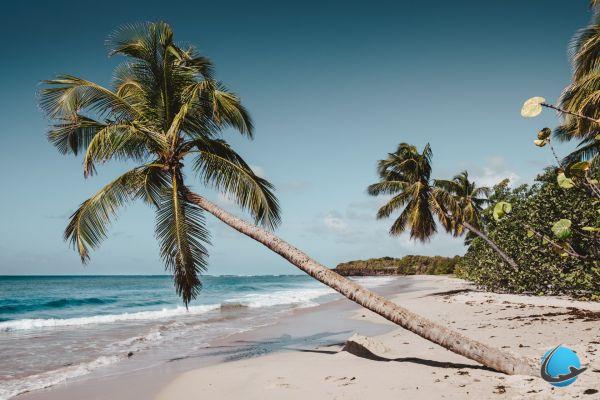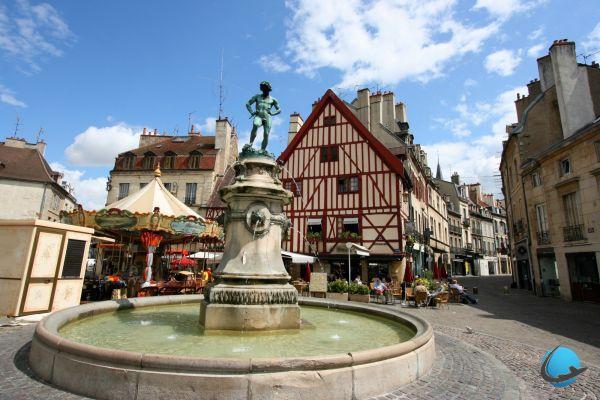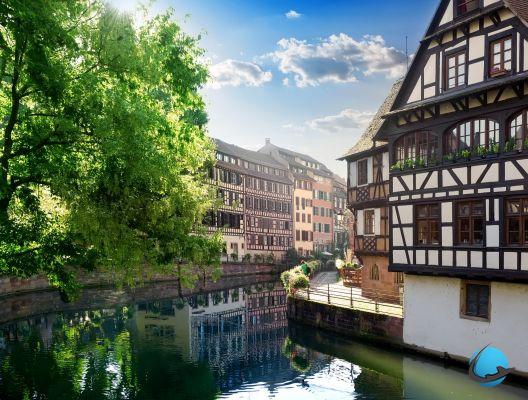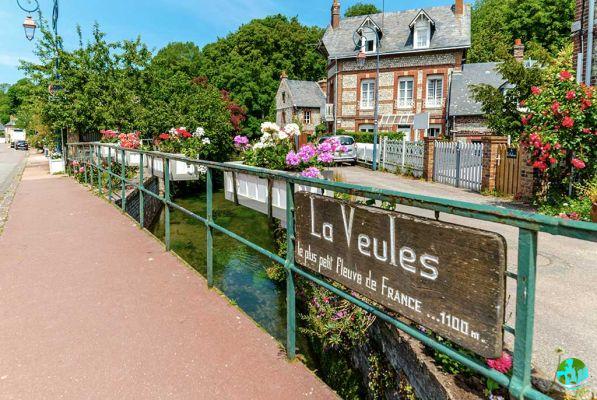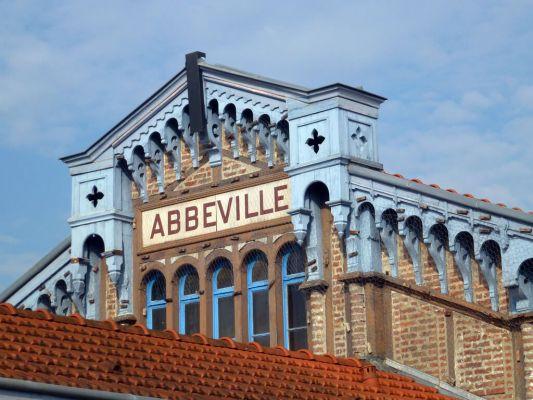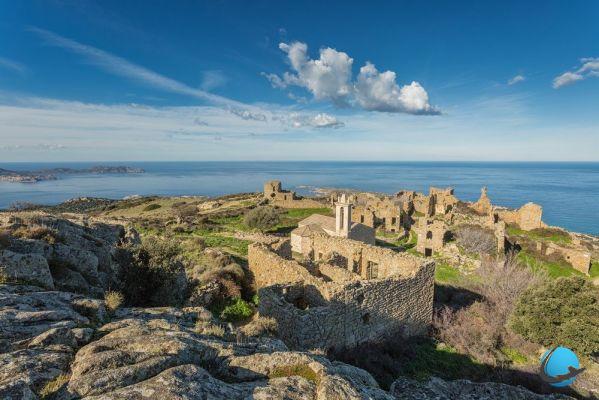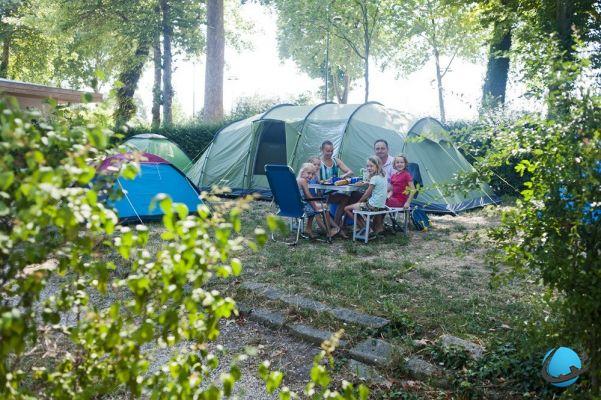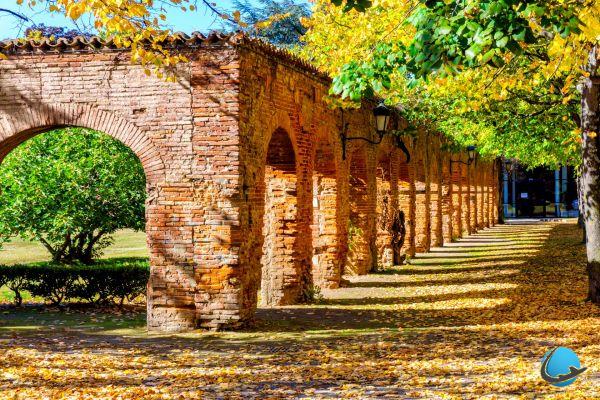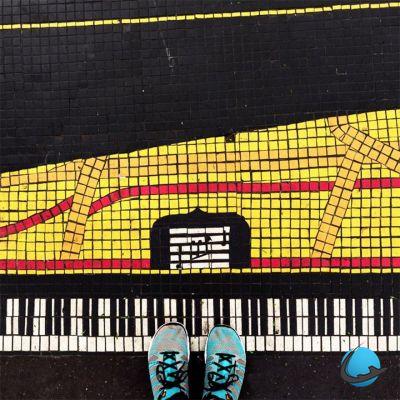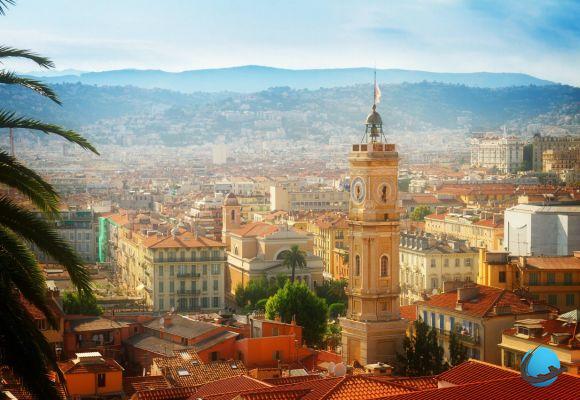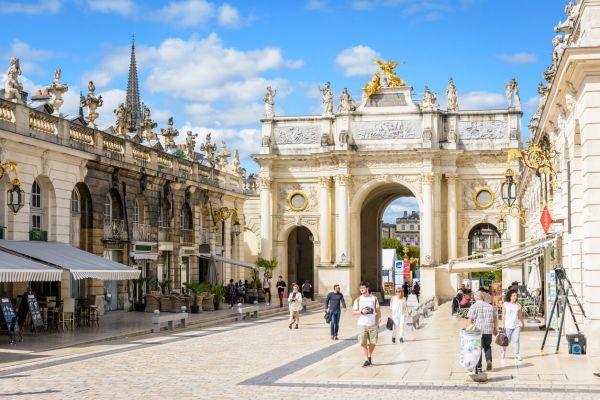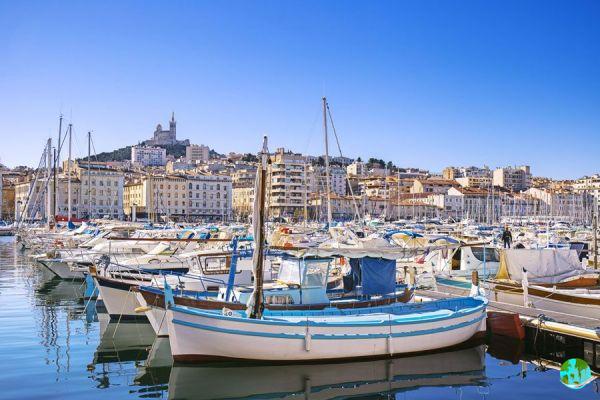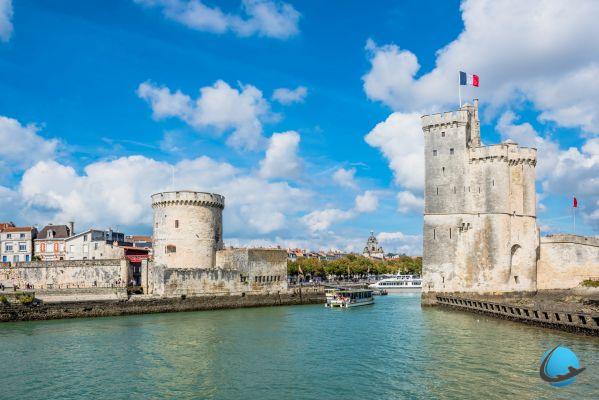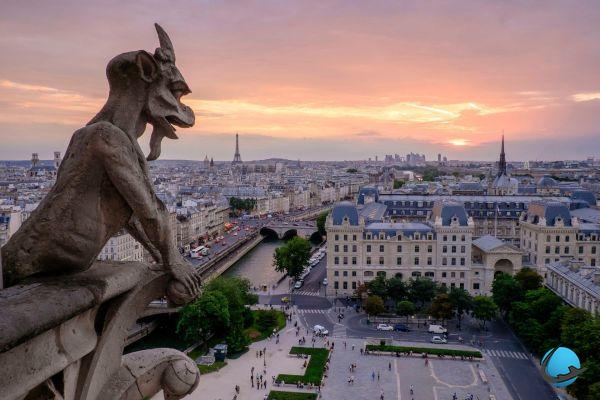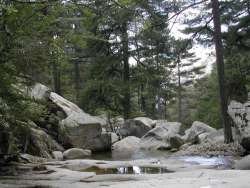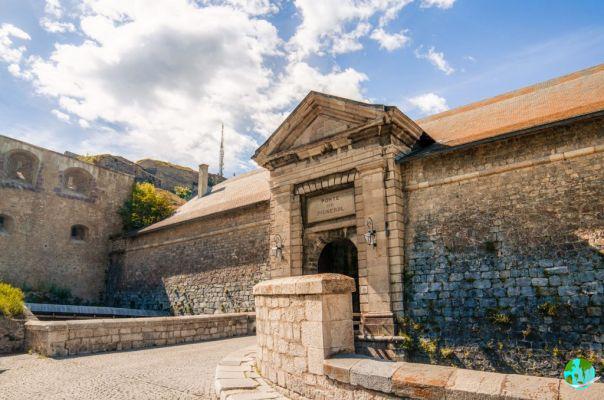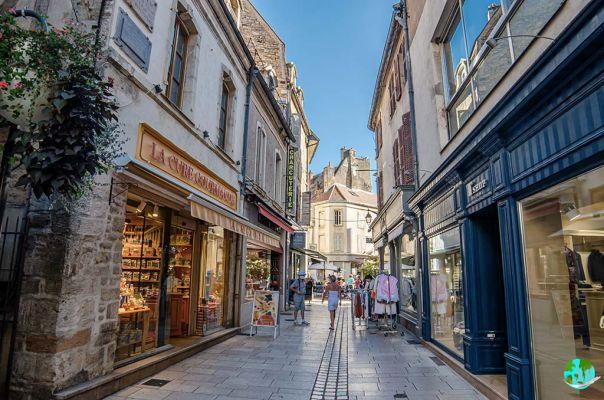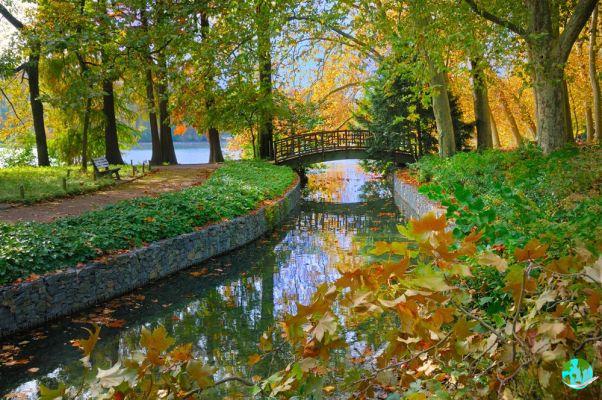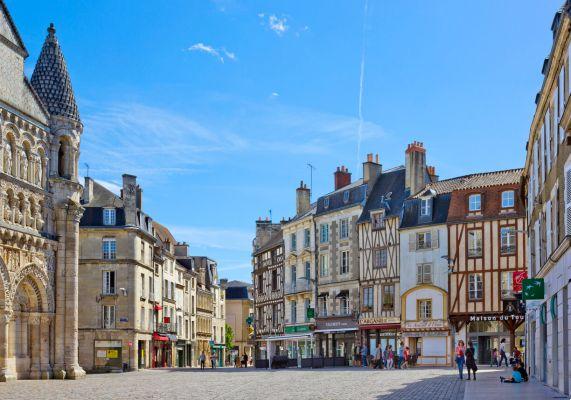Visit the Alabaster Coast: today, I'm taking you to discover one of the most legendary French coasts. Famous throughout the world for its cliffs, the Alabaster Coast attracts millions of tourists every year who come to discover its most famous city, Étretat.
This coast begins not far from the Bay of Somme, at Mers-Les-Bains, a former posh seaside resort; to end in the city of Le Havre.
Let's discover the things to do and see on the Alabaster Coast.
What to do on the Alabaster coast?
- Mers-les-Bains
- Le tréport
- Dieppe
- Veules-les-Roses
- Saint-Valéry-en-Caux
- Veulette-sur-mer
- Fécamp
- Yport
- Etretat
- Cape and valley of Antifer
- Le Havre
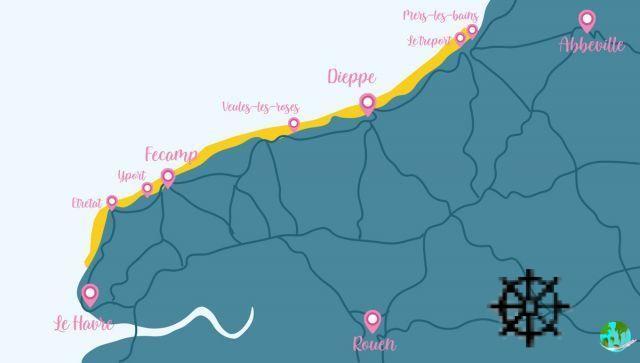
Location of places of interest on the Alabaster coast
Mers-les-Bains, the first cliffs to visit on the Alabaster Coast
As I presented to you in the introduction, Mers-les-Bains was at the time a very popular seaside resort for Parisian high society. Many villas were built facing the sea. They are richly colored and were built with a lot of audacity and originality. New architectural elements appeared at the time of their construction, such as bow windows, loggias or beautiful balconies with sea views.
This set of villas directly overlooking the beach, as well as their history, make the reputation of this small seaside resort. Not to mention the magnificent cliffs that begin at this place. If you take a little height, you will be able to become aware of the immensity of these cliffs carved by nature.
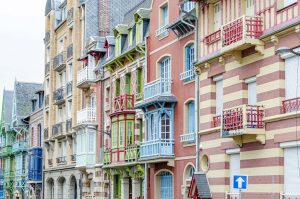 Read our dedicated article
Read our dedicated articleIf you want to learn more about Mers-les-Bains, its pretty villas, things to visit and places to stay, I invite you to read our dedicated article on Mers-les-Bains. Visit Mers les Bains
Le tréport
The first town in the Normandy region, Le Tréport is a popular seaside resort. Formerly an important fishing port, the city has also succumbed to the fashion for sea bathing. Today it is a popular resort for the inhabitants of the region as well as Parisians. At certain times it is even possible to reach Le Tréport directly by train from Paris.
You will see that, like many towns on the Alabaster Coast, Le Tréport is also renowned for its cliffs. If you want to know more about this seaside resort, do not hesitate to read our article dedicated to the visit of Tréport.
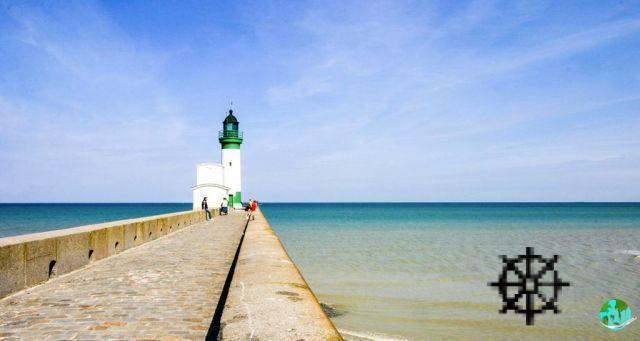
Visit the Alabaster Coast: Dieppe
Between scallop fishing port and seaside resort since the XNUMXth century, Dieppe is a very charming city. Explore its different districts to discover the different atmospheres and the evolution of the city over the centuries. Between sea and history, Dieppe also has pretty cliffs and is one of the important stops for visiting the Côte d'Albâtre.
Why the Alabaster Coast?Alabaster is actually a material used in sculpture. It is very white in color. When the sea comes against the cliffs, a very whitish mixture forms in the water, giving this particular color specific to Alabaster.
Veules-les-Roses, a must for a visit to the Côte d'Albâtre
This is a charming little village: Veules-les-Roses! With its smallest river in France and its many rosebushes, Veules-les-Roses is an essential visit during a stay along the Côte d'Albâtre. To not miss anything during your visit, I invite you to follow the Veules circuit: organized by the tourist office, this circuit takes you on a discovery of the local heritage and its history. In total, there are 23 points that introduce you to Veules-les-Roses: from the watercress beds to the mouth of the Veules, on the beach, where you will also find beautiful cliffs!
Get the Veules circuit
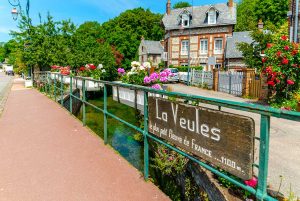 Read our dedicated article
Read our dedicated articleVeules-les-Roses deserves an article for itself, and it's done! Discover our visit to Veules-les-Roses on the Alabaster Coast: what to visit, where to sleep, practical advice, etc. Visit Veules-les-Roses
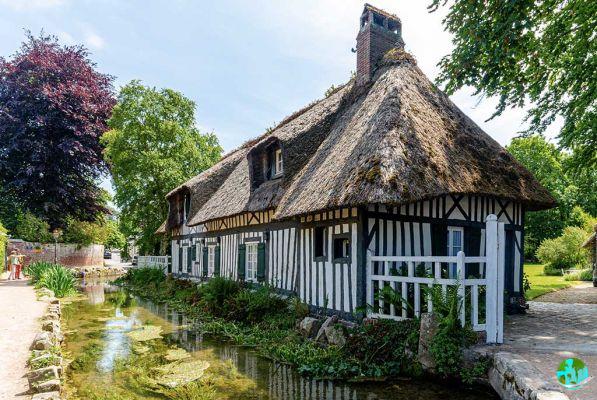
Saint-Valéry-en-Caux
Saint-Valery-en-Caux is a seaside resort of around 4 inhabitants. There is a very beautiful beach surrounded by cliffs, a casino, a swimming pool as well as some places of interest worth visiting.
The city also welcomes motorhomes in a car park (paying) on the edge of the beach.
- The Notre-Dame du Bon Port chapel: Located in the center of Saint-Valery-en-Caux, the Notre-Dame du Bon Port chapel is worth crossing its threshold to contemplate its impressive stained glass windows. Rebuilt after the war, this chapel is open every day in summer, it is however closed on Sundays and Mondays in winter.
- Château du Mesnil-Geoffroy: Located 10 kilometers from the center of Saint-Valery-en-Caux, the Château du Mesnil-Geoffroy, built at the end of the 10th century, has remained unchanged since its construction. Established on a 1-hectare park, the residence has seen some illustrious figures stay there, including Victor Hugo and Antoine de Saint-Exupéry. The castle is open from May 30 to September 9,50. The guided tour of the castle and gardens will cost you €XNUMX.
- Maison Henri IV: Built in 1540 in the Norman style, the Maison Henri IV is one of the oldest residences in the city. Henri IV is said to have stayed there many times, hence its current name of “Maison Henri IV”.
Veulette-sur-mer
Nicknamed “The pearl of the Pays de Caux”, Veulette-sur-mer is a small seaside resort which sees its population multiply by 10 during the summer period. Indeed, even if there are less than 300 inhabitants there all year round, in summer, more than 3 people stay in the seaside resort of the Alabaster Coast.
With its areas of Étretat and its arc-shaped beach delimited by imposing cliffs, Veulette-sur-mer has the largest beach on the entire Alabaster Coast with a promenade nearly 2km long.
Fécamp
During your visit to the Côte d'Albâtre, you must pass through Fécamp. This small town has something to arouse the curiosity of its visitors: fishing port, listed in the national network of Towns and Countries of Art and History, huge beach, typical cliffs of the region,... Fécamp is a small dynamic town which offers many tourist sites to visit, both museums and churches or other monuments.
I advise you to go to its port and observe the two lighthouses that frame the entrance and exit of the port. It is original to be able to observe these two lighthouses facing each other.
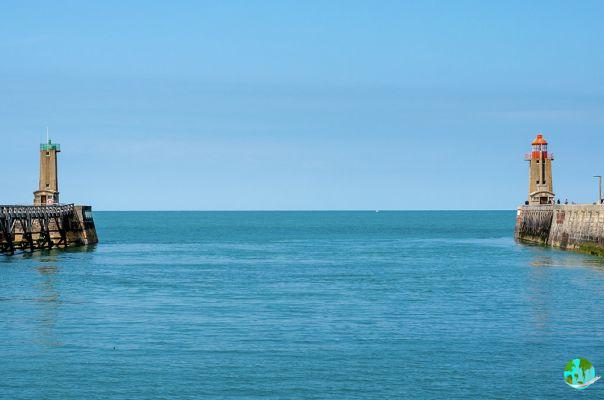
Finally, you can also climb to the heights of Fécamp and thus be able to observe a breathtaking panoramic view of Fécamp, its beach and all the surrounding cliffs! For this, go to Cap Fagnet.
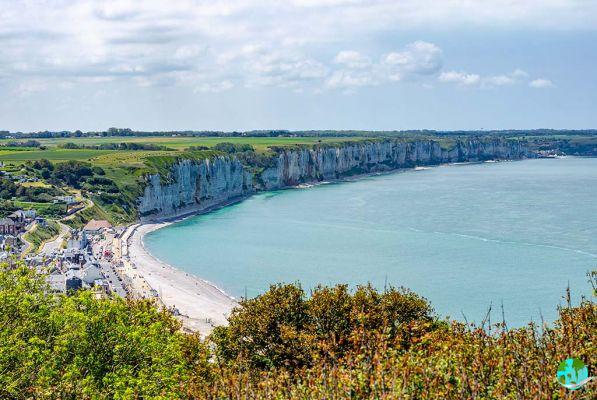
Yport
The small village of Yport is located halfway between Fécamp and Étretat. If you want to discover Yport and its beach, you will have to take a beautiful road, in the middle of the forest, which will take you to your destination. Once there, you can admire the beautiful bourgeois villas or its magnificent beach and its beautiful cliffs! With its small typical beach huts, Yport is ideal for a lunch break by the water. The visit is fast.
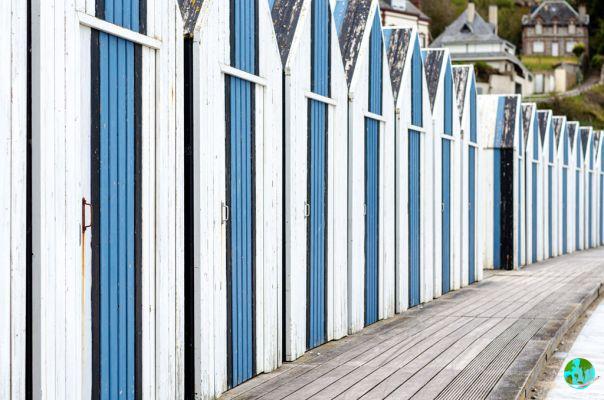
Étretat, the must-do on the Alabaster Coast
Étretat is truly the number 1 must-see on your visit to the Alabaster Coast! This village of 1 inhabitants welcomes more than 300 million tourists each year who come to admire its cliffs. There are many things to do in Étretat. In addition to its beach and its cliffs, the historic center of the city is also of primary interest.
A large number of illustrious people have stayed in this city, such as Guy de Maupassant or Claude Monet.
Sleeping in Étretat could be a wise choice in order to visit the Alabaster Coast in the best possible way.
Here are some of the must-see places in Étretat:
- The cliffs: Of course the cliffs remain the number one must in Étretat. They alone symbolize the Alabaster Coast, famous for its impressive stretches of white chalk. The cliffs of Étretat are two in number: the cliff of Aval and the cliff of Amont. Both are worth discovering.
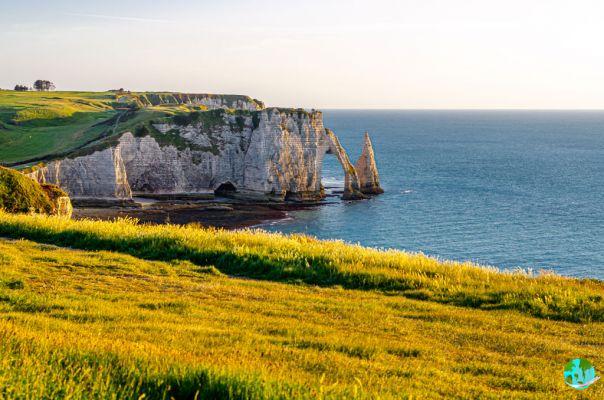
Falaise d'Aval
- The Gardens of Étretat: Another must-see in Étretat, the Jardins d'Étretat. Since 2015, Étretat has welcomed a new place not to be missed: its Gardens. Located on the heights of the cliffs of Amont, these impressive gardens have given new life to a historic place in the city in which the painter Claude Monet liked to spend his time. Take the time to discover them, between gardens and open-air museum of contemporary art, you will not be disappointed with the visit.
Buy your tickets for the Jardins d'Étretat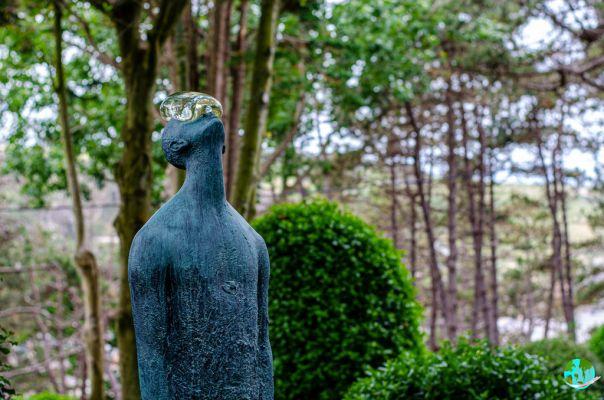
- The historic center of Étretat: Former fishing village, then upscale resort on the Alabaster Coast, Étretat is home to some treasures such as its Halles, its Salamdre manor, Clos Lupin, former residence of the writer Maurice Leblanc or even the house of the writer Guy de Maupassant, today transformed into a museum.
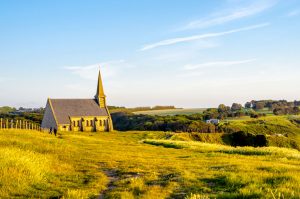 Discover Étretat
Discover Étretat
If you want to know more about Étretat, things to do and see, I invite you to read our article dedicated to visiting Étretat. In this article I talk to you in more detail about how to discover the city and its cliffs.
Read our guide to EtretatCape and valley of Antifer
The Cap and the valleuse of Antifer are located not far from Étretat, it is even possible to reach them on foot thanks to the coastal path starting on the cliff of Aval.
The valley of Antifer is one of the last non-urbanized in the region. For information, a valley is a place where the cliff has collapsed, leaving access to the sea. This valley was once used by fishermen in the region.
Cap d'Antifer, on the other hand, offers a magnificent view of the surrounding cliffs. This place, far from civilization, offers an ideal refuge for many species of birds.
Le Havre
To conclude this article on our visit to the Côte d'Albâtre, here is the last stop: the city of Le Havre. With its particular architecture due to its total reconstruction after the bombings of the Second World War, Le Havre offers a surprising discovery, both modern and original while being entirely made of reinforced concrete.
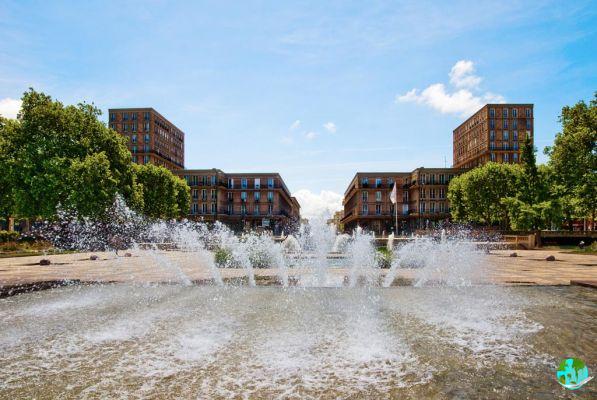
The architect at the origin of its reconstruction knew how to give an undeniable uniqueness to the city. Dynamic port, modern buildings to visit, lively and dynamic districts, but also recent constructions, … Le Havre has been able to rise from its ashes and evolve over the years, giving it a pleasant city to visit today.
I hope that this visit to the highlights of the Alabaster Coast will have made you want to discover this region.




